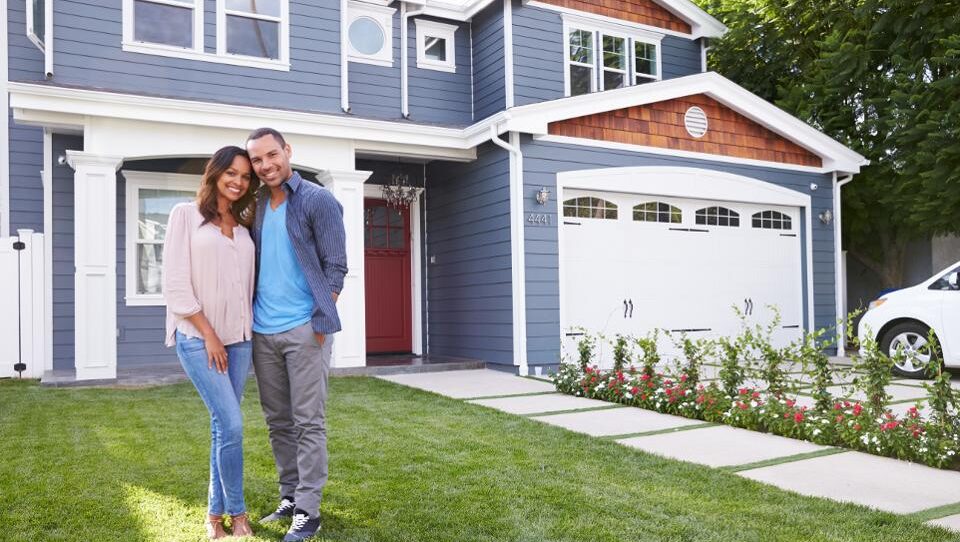
|
|
You might be using an unsupported or outdated browser. To get the best possible experience please use the latest version of Chrome, Firefox, Safari, or Microsoft Edge to view this website. |

Conventional mortgages make up the majority of all home loans—about 64% in total. Conventional mortgages are issued by banks and other lenders and are often sold to government-backed entities like Fannie Mae and Freddie Mac.
Even though a conventional loan is the most common mortgage, it is surprisingly difficult to get. Borrowers need to have a minimum credit score of about 640 in order to qualify—the highest minimum score of all mortgage products—and have a debt-to-income ratio of 43% or less. Borrowers also need to be able to afford a down payment of 20% or more in order to avoid mortgage insurance.
What Is a Conventional Mortgage?
A conventional loan is a type of mortgage that’s made for residential property. These loans are issued by private lenders (banks, credit unions and other lenders). Lenders that make conventional loans also service the loans, meaning that they collect mortgage payments and pursue foreclosure if a borrower defaults.
Conventional mortgages are not government-backed, like a USDA or FHA loan. However, in order for a home loan to qualify as a conventional mortgage, it must comply with lending rules set by Fannie Mae and Freddie Mac. These rules require:
- A minimum credit score of about 640 to qualify, depending on the loan amount, debt-to-income ratio, and other factors
- A debt-to-income ratio under 43%—may be lower for borrowers with lower credit scores
- No major credit report issues, like bankruptcy or foreclosure
- A down payment of 3% or more (20% if you don’t want to buy mortgage insurance)
- A total loan amount of $510,400 or less (in most areas — $765,600 in higher-cost areas)
The loan limit for conventional mortgages varies by location. For 2020, the limit in most areas is $510,400. However, for higher-cost areas, the limit can be as high as $765,600.
How a Conventional Mortgage Works
Getting a conventional loan can be a slow process. There’s a lot of paperwork and documentation that you’ll need to provide. But the steps it takes to get a conventional loan are actually relatively simple.
The process starts when you apply for a mortgage. You’ll work with a loan officer to complete your application and provide relevant financial documents. When your loan is approved, you close—which is when you actually get your loan.
When you take out a mortgage, the lender who issues your loan takes a mortgage lien against your home, which gives them a secured interest in the property. When you have a mortgage, you can’t sell or borrow against the property without the lender’s permission. If you stop paying your mortgage, the lender can sell the property to recoup the outstanding loan balance.
Required Documentation You’ll Need When Applying for a Mortgage
Before approving your loan, your lender will need to document everything that you put on your application, including income, debts, assets and your credit score. The lender requires this to ensure you make enough money to afford your loan.
The seven pieces of documentation you’ll need are:
- Your driver’s license or other photo ID
- Pay stubs from the past month (if you’re a W2 employee)
- Tax returns for the past two years
- Documentation to show how you’ll make your down payment
- A financial statement that shows assets and liabilities
- Your credit report, which your lender will order
- An appraisal of the property being borrowed against
Who Qualifies for a Conventional Loan?
Standard qualification requirements include:
- A debt-to-income ratio under 43% (potentially lower if you don’t have great credit)
- A minimum credit score of about 640
- A down payment of at least 3% (20% if you want to avoid paying for mortgage insurance)
Because many conventional loans are sold to government entities like Fannie Mae and Freddie Mac, lenders often assume little risk on individual loans, which means that borrowers can often get the lowest interest rates available—especially if they have good or excellent credit and household incomes over $60,000 to $75,000 per year.
A conventional loan is ideal for:
- Those with stable full-time jobs that provide regular, consistent paystubs
- Self-employed people with three or more years of consistent, reliable income
- Married couples with moderate to high household income and little debt
Conforming Vs. Non-Conforming Loan
A conventional loan falls into two different categories: conforming and non-conforming. Conforming loans are those that conform to lending standards set by Fannie Mae and Freddie Mac, meaning that Fannie or Freddie will purchase the loan from the lender, so the lender doesn’t have to wait 30 years to collect the full amount of the loan.
The other type of conventional loan—non-conforming loans—do not conform to Fannie or Freddie lending standards, so they can’t be sold quickly by the lender. Because lenders have to hold these loans for longer, they assume more risk, meaning interest rates are typically higher, as are minimum credit requirements. These loans are often reserved for especially well-qualified borrowers who have high incomes and high net worths.
How Jumbo Mortgages Work
Jumbo mortgages are similar to conventional loans except for one key difference: They have loan amounts above the limit for conforming loans ($510,400 for most areas in 2020, but this varies by location).
Because these loans don’t comply with Fannie and Freddie lending requirements, they can’t be sold as easily by lenders. This means lenders must take on more risk when making jumbo loans, so they sometimes require higher down payments, higher minimum credit scores or lower debt-to-income ratios in order to qualify.
What Is the Minimum Down Payment for a Conventional Mortgage?
The lowest down payment available for conventional mortgages is 3% for 30-year fixed-rate loans. For adjustable-rate mortgages (ARMs), the requirement is higher—5%. However, any borrower who puts less than 20% down will be required to purchase mortgage insurance.
Minimum down payments for conventional loans are:
- 3% for fixed-rate loans
- 5% for adjustable-rate loans
When You’ll Need to Pay Private Mortgage Insurance
Any borrower with a conventional loan who puts less than 20% down is required to buy private mortgage insurance (PMI), which raises the annual cost of the loan. This mortgage insurance can be canceled once the homeowner’s equity in their home surpasses 20%. Mortgage insurance provides protection for your lender in case you default on your loan.
Conventional Loans Vs. Other Types of Mortgages
Conventional loans are similar to other types of home loans—especially those that are government-backed, such as FHA and USDA loans. However, because conventional mortgages are issued by private lenders and may not be insured by the government, they typically require higher minimum credit scores in order to qualify.
The biggest difference between conventional mortgages and other government-backed home loans is that government-backed loans are typically designed to help low-to-moderate-income borrowers or those with lower credit scores. Conventional loans, on the other hand, are ideal for those with good credit, steady jobs and low debt-to-income ratios.
How Conventional Loan Rates Compare
While conventional mortgage rates are relatively low compared to alternative home loans, they typically aren’t as low as some government-backed mortgages.
What’s more, conventional mortgages may be more expensive than government-backed loans for borrowers who aren’t able to put 20% down because they’re required to buy private mortgage insurance. This insurance typically adds 0.5% to 1% to the cost of the loan every year, which is higher than mortgage insurance required by FHA and USDA home loan programs.
If you have a credit score of 700 or higher, a debt-to-income ratio of 35% or lower, and a 20% down payment for your loan, a conventional mortgage may be your best bet. If your credit score is lower than 640 or you can’t put 20% down, you may want to consider an FHA or USDA loan instead.









